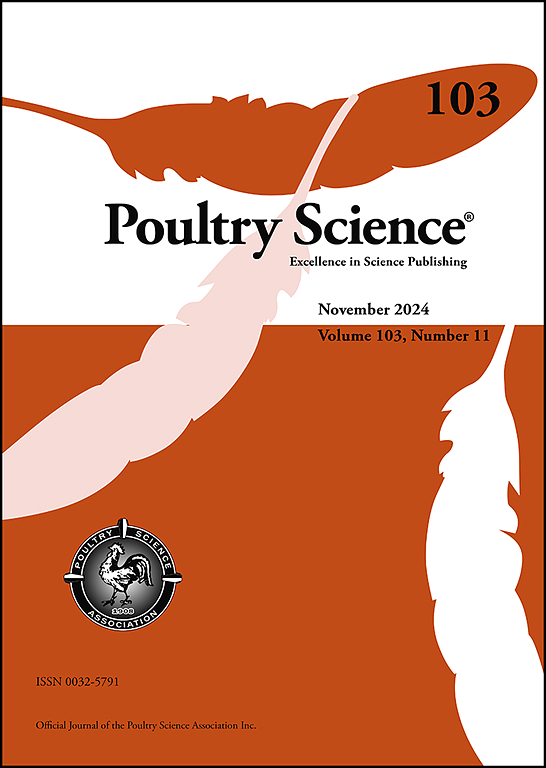Transcriptome analysis of testis and epididymis identifies key genes and pathways regulating gander sperm motility
IF 3.8
1区 农林科学
Q1 AGRICULTURE, DAIRY & ANIMAL SCIENCE
引用次数: 0
Abstract
Sperm motility is a critical indicator of semen quality and determines the reproduction performance in male poultry. However, compared to chickens and ducks, very little is known about the physiological basis of varying levels of sperm motility as well the underlying regulatory mechanisms in geese. To address this, in the present study, a systematic comparison of semen quality parameters and histomorphological characteristics and genome-wide transcriptomic profiles of testes and epididymis were performed in ganders with high and low sperm motility. Our results showed that the size, weight, and organ index of bilateral testes and epididymis of ganders from high sperm motility (HSM) group tended to be higher (P > 0.05) than those of ganders from low sperm motility (LSM) group, implying better reproductive organ development in HSM. The ejaculate volume, sperm density, sperm viability, and semen quality factor of the ganders were observed to be significantly higher in HSM than in LSM (P < 0.01), and the opposite was seen in sperm deformity rate (P < 0.01). Moreover, the ganders in HSM showed significantly higher testicular seminiferous epithelial thickness and seminiferous tubule diameter (P < 0.05), higher number of Sertoli cells (SC), spermatids (Sd), and spermatozoa (Sa, P < 0.05), as well as greater diameter and area of epididymal proximal efferent ductule (PED, P < 0.05) than those in LSM. Comparative transcriptomic analysis identified 1,828 and 483 differentially expressed genes (DEGs) in the testis and epididymis of ganders between HSM and LSM, respectively. Functional enrichment analysis revealed that these DEGs were significantly enriched in the Wnt signaling, Apelin signaling, melanogenesis, and GnRH signaling pathways. The protein-protein interaction network analysis further highlighted the hub genes. The testicular DEGs including PLCB1, PLCB2, WNT11, WNT4, and LRP6 were identified to regulate sperm motility through the Wnt signaling pathway, while the epididymal DEGs including WNT3A, WNT9B, SOX2, and SOX10 could affect sperm motility by regulating epididymal cellular proliferation and differentiation. These data provided new insights into the regulatory mechanisms of male poultry reproductive organ development and sperm quality and would be helpful for developing molecular approaches in the genetic improvement of goose fertility.
求助全文
约1分钟内获得全文
求助全文
来源期刊

Poultry Science
农林科学-奶制品与动物科学
CiteScore
7.60
自引率
15.90%
发文量
0
审稿时长
94 days
期刊介绍:
First self-published in 1921, Poultry Science is an internationally renowned monthly journal, known as the authoritative source for a broad range of poultry information and high-caliber research. The journal plays a pivotal role in the dissemination of preeminent poultry-related knowledge across all disciplines. As of January 2020, Poultry Science will become an Open Access journal with no subscription charges, meaning authors who publish here can make their research immediately, permanently, and freely accessible worldwide while retaining copyright to their work. Papers submitted for publication after October 1, 2019 will be published as Open Access papers.
An international journal, Poultry Science publishes original papers, research notes, symposium papers, and reviews of basic science as applied to poultry. This authoritative source of poultry information is consistently ranked by ISI Impact Factor as one of the top 10 agriculture, dairy and animal science journals to deliver high-caliber research. Currently it is the highest-ranked (by Impact Factor and Eigenfactor) journal dedicated to publishing poultry research. Subject areas include breeding, genetics, education, production, management, environment, health, behavior, welfare, immunology, molecular biology, metabolism, nutrition, physiology, reproduction, processing, and products.
 求助内容:
求助内容: 应助结果提醒方式:
应助结果提醒方式:


